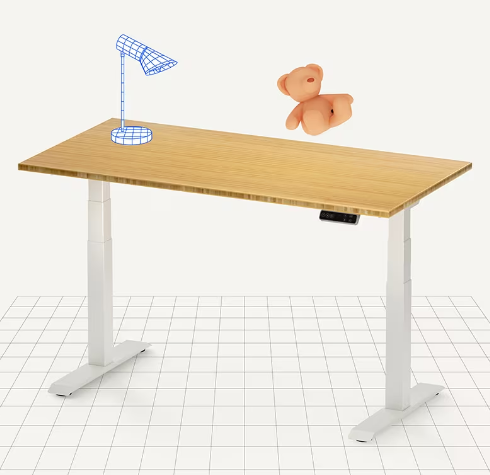No matter how they appear—tension, migraine, or cluster—chronic headaches can have a major negative effect on a person’s quality of life. The persistent presence of headache pain, when combined with related symptoms like light and sound sensitivity, nausea, and difficulty focusing, can make it difficult to go about daily activities and enjoy hobbies. Although taking medication can help temporarily, it frequently doesn’t address the underlying causes of persistent headaches. Physical therapy addresses musculoskeletal imbalances, tension, and dysfunction that contribute to pain in order to provide a comprehensive and successful approach to managing chronic headaches. We’ll look at the role physical therapy plays in treating chronic headaches, the underlying causes of headache pain, and ways that people can break free from the grip of persistent head pain in this blog post.
Comprehending Prolonged Headaches:
Recurrent episodes of headache pain lasting more than 15 days per month for at least three months are the hallmark of chronic headaches. They can be divided into a number of categories, each with a distinct set of symptoms and causes, such as tension headaches, migraines, cluster headaches, and cervicogenic headaches.
The most common kind of headache, tension headaches, are frequently described as an aching, dull pain that resembles a tight band around the head. Usually brought on by stress and tense muscles, they can be made worse by bad posture, extended sitting, or repetitive motions.
Intense, throbbing pain, typically localized to one side of the head, is the hallmark of migraines, which also include light and sound sensitivity and nausea. Although the precise cause of migraines is unknown, a combination of neurological, environmental, and genetic factors are believed to be involved.
Although they are not common, cluster headaches are notorious for their unbearable intensity and quick onset. They frequently happen in groups or cycles, with several attacks spaced out over several weeks or months, interspersed with times of abatement.
The cervical spine or neck region is the source of cervicogenic headaches, which frequently cause stiffness and pain in the neck. They may be brought on by tense muscles, dysfunction of the cervical spine, or bad posture.
Physical Therapy’s Role in Managing Headaches:
Because physical therapy addresses the underlying musculoskeletal factors that contribute to pain and tension, it is an important part of managing chronic headaches. Physical therapists employ a range of methods and strategies, customized to meet the unique requirements and symptoms of each patient, to lessen pain, increase mobility, and restore function.
Physical therapy can benefit people who have chronic headaches in the following ways:
1. Manual Therapy: To relieve muscle tension, enhance circulation, and lessen pain, physical therapists employ hands-on methods including massage, joint mobilization, and myofascial release. Manual therapy treats trigger points and tight spots in the neck, shoulders, and upper back to relieve headache symptoms and induce relaxation.
2. Postural Correction: Tension headaches and cervicogenic headaches, in particular, are frequently brought on by poor posture. Physical therapists Durham evaluate how the body moves and how one’s posture is to find any imbalances or misalignments that might be causing headaches. People can learn to maintain proper alignment and lessen strain on their necks and spines by engaging in corrective exercises, ergonomic education, and lifestyle modifications.
3. Exercises for Strengthening and Stretching: Certain exercises that focus on the muscles in the neck, shoulders, and upper back can help increase mobility, flexibility, and strength while lowering stress and avoiding headaches. Stretching exercises help relieve tension and increase range of motion, while strengthening exercises concentrate on developing endurance and stability in the muscles that support the head and neck.
4. Relaxation Techniques: Tension and stress are frequent causes of long-term headaches. Physical therapists instruct patients in relaxation methods like progressive muscle relaxation, deep breathing, and guided imagery to help them manage stress, ease tension in their muscles, and lessen headache symptoms. People can enhance their ability to manage stress and avoid headache flare-ups by adopting these techniques into their daily lives.
5. Education and Self-Management: A key component of physical therapy is arming patients with information about lifestyle factors, headache triggers, and self-care techniques. Physical therapists offer advice on how to pace activities and prevent overexertion in addition to teaching patients on good posture, ergonomics, and stress management methods. Through the identification and resolution of possible triggers, people can actively participate in the management of their headaches and enhance their general quality of life.
Getting Well and Taking Back Your Life:
It can be difficult to live with chronic headaches, but it’s important to remember that relief is achievable with the correct strategy and assistance. Consider getting assistance from a licensed physical therapist if you’re experiencing chronic headaches. They can evaluate your condition, create a customized treatment plan, and offer support and guidance along the way.
Adopting healthy lifestyle practices, such as regular exercise, practicing relaxation techniques, maintaining proper posture, staying hydrated, and managing stress, can help lessen the frequency and intensity of headaches in addition to physical therapy.
It is crucial to exercise patience and perseverance while seeking treatment for persistent headaches. Have an open mind and be prepared to experiment with various methods and strategies until you determine which one(s) suits you the best. You can break free from the grip of pain and tension in your life and find relief from chronic headaches with commitment, persistence, and the correct support. Remind yourself that there is relief available and you don’t have to suffer in silence. Learn more about NC Center for PT for expert guidance and personalized treatment plans tailored to alleviate your headache symptoms and improve your overall quality of life.
![Инстаграм Блог - Исправьте свои проблемы [Советы и рекомендации]](https://wikigeneral.net/wp-content/uploads/2023/05/cropped-Инстаграм-Блог-Исправьте-свои-проблемы-Советы-и-рекомендации.webp)





